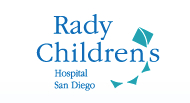Anakinra in Infants and Children With Coronary Artery Abnormalities in Acute Kawasaki Disease
| Status: | Recruiting |
|---|---|
| Conditions: | Women's Studies, Endocrine |
| Therapuetic Areas: | Endocrinology, Reproductive |
| Healthy: | No |
| Age Range: | Any - 17 |
| Updated: | 10/28/2017 |
| Start Date: | November 2014 |
| End Date: | December 2020 |
| Contact: | Adriana H Tremoulet, MD, MAS |
| Email: | atremoulet@ucsd.edu |
| Phone: | 858-246-0012 |
Kawasaki disease (KD) is the leading cause of acquired heart disease in children in the
developed world. Despite available treatment, 25% of children in San Diego County
appropriately treated for KD develop coronary artery abnormalities that may lead to
complications later in life, including heart attack. Although the investigators can identify
children with KD that have these coronary artery abnormalities, there is no approved
additional treatment to decrease coronary artery inflammation and arrest or prevent damage to
the coronary arteries. Anakinra, a therapy that blocks the high levels of interleukin 1 (IL1)
that lead to inflammation during acute KD, has been shown in the KD mouse model to prevent
the development of coronary artery damage. Therefore, the investigators propose to study the
safety and activity of anakinra in infants and children < 2 years old with coronary artery
abnormalities from KD.
developed world. Despite available treatment, 25% of children in San Diego County
appropriately treated for KD develop coronary artery abnormalities that may lead to
complications later in life, including heart attack. Although the investigators can identify
children with KD that have these coronary artery abnormalities, there is no approved
additional treatment to decrease coronary artery inflammation and arrest or prevent damage to
the coronary arteries. Anakinra, a therapy that blocks the high levels of interleukin 1 (IL1)
that lead to inflammation during acute KD, has been shown in the KD mouse model to prevent
the development of coronary artery damage. Therefore, the investigators propose to study the
safety and activity of anakinra in infants and children < 2 years old with coronary artery
abnormalities from KD.
Inclusion Criteria:
1. Infant or child aged 1 month to 17 years, who meets clinical criteria for KD according
to American Heart Association guidelines (Table 2): Fever (T≥38oC or 100.4oC) ≥ 3 days
and ≥ 2 clinical criteria with left anterior descending (LAD)/right coronary artery
(RCA) Z score ≥ 3.0 or an aneurysm (≥ 1.5 x the adjacent segment) of one of the
coronary artery segments
2. Patient presents within the first 20 days after fever onset
3. Parent or legal guardian able and willing to provide informed consent; adolescent or
child assent as appropriate
4. Post-menarchal females: Negative pregnancy test at screening and willing to use two
forms of contraception during the study
5. Males engaging in sexual activity that could lead to pregnancy willing to use a
condom.
Exclusion Criteria:
1. Use of an IL-1 antagonist within the 3 months prior to enrollment
2. History of chronic disease, except asthma, atopic dermatitis, autism or controlled
seizure disorder
3. History of hypersensitivity to anakinra
4. History of tuberculosis (TB) or TB exposure
We found this trial at
1
site
3020 Childrens way
San Diego, California 92123
San Diego, California 92123
(858) 576-1700

Principal Investigator: Adriana H Tremoulet, MD, MAS
Phone: 858-246-0012
Rady Children's Hospital - San Diego Rady Children's Hospital-San Diego is the region’s pediatric medical...
Click here to add this to my saved trials